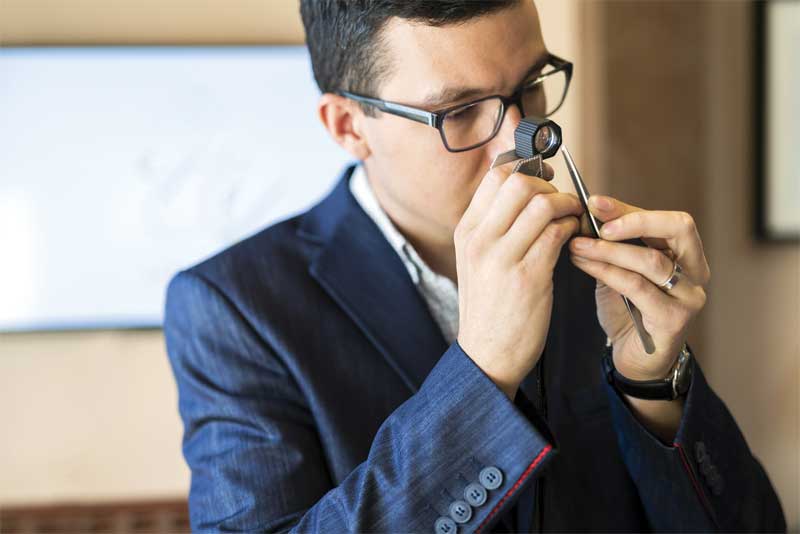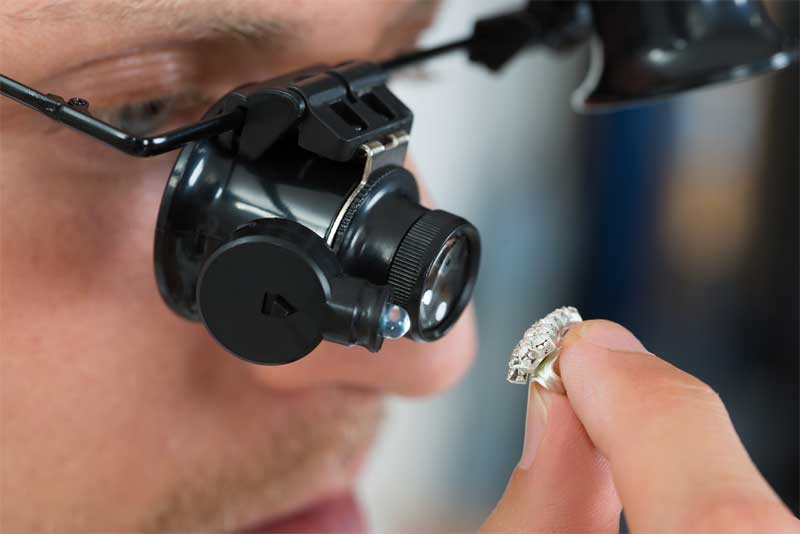The price one has to pay: Finding value beyond cost
by Katie Daniel | December 16, 2016 11:48 am
 By Hemdeep Patel
By Hemdeep Patel
Like many people, I read online blogs and articles on general topics from which I draw inspiration and apply to my business. One in particular—“Are you cheap or are you exceptional? How to price your services”—caught my eye on Copyblogger, a site focusing on marketing and business strategies. The blog post discussed how a business owner can accurately price his or her services without undermining their core business strengths, all the while convincing clients they’re worth what they charge.
I found this an interesting topic for our industry, since the vast majority of us have built our businesses against a constant push toward trimming our profit margins. The result is we’ve had to find other ways to offer value to our clients. Case in point: I’ve written many times in this column over the over last nine years of the hidden value of buying diamonds that are closer to the upper end of the clarity scale (i.e. buying an SI1 stone that is closer to a weak VS2 grade, rather than a good SI2). Or the value found in gemstones where colour zoning is not apparent when the gem is viewed face-up and invisible once placed into a closed-back setting. These are strategies many can use to maximize margins, but also illustrate to consumers an ability to find a stone with great value.
Diminishing value
Although most of my articles focus on the product side of the jewellery industry, I believe the services we provide suggest a similar value proposition. Since 1994, my brother and I have offered advanced gemmological and appraisal services in Canada, India, and Thailand. Our principal focus has always been the strength of our gemmological knowledge and dedication to maintaining a high level of customer service. Much like finding value in diamonds and coloured gemstones, the strength of a gemmologist or appraiser can translate into business success for a retailer. Through the addition of a well-trained gemmologist or appraiser, a retailer can have access to a knowledgeable resource that can not only provide a sharp set of eyes to conduct quality control on finished jewellery and repairs, but identify key changes in grading criteria or gemstone and diamond trends that could prove valuable.

Yet, despite the constant drumbeat of our core business values and strengths, there remains a challenge to keep the overall cost of our products and services down for our customers. In speaking with other gemmologists and appraisers, it would appear our struggles are not unique. Many well-established gemmologists and appraisers continue to be forced into running their businesses on the basis of price, rather than the strength of their knowledge and professionalism. This relentless push toward charging less can impact the types of services a gemmologist or appraiser provides to the point where they may focus on the quantity of jewellery items examined, rather than the quality of the information offered to the customer.
To an outside observer, a gemmologist or appraiser is seen as a professional who has been licensed by a governing body and is held to high standards of conduct. They would also be held accountable in a court of law, should they engage in misconduct. Unfortunately, we know this is not entirely the case. I feel the bar for entry as a gemmologist or appraiser is not very high or restricted. It is often said all that is needed to be an appraiser is a computer, a printer, and a stack of certificates. Sadly, in my experience there are jewellers who view gemmologists and appraisers in the same light.

Stepping up oversight
I feel there is an apparent lack of oversight in our industry that can result in decreased consumer confidence. We’ve all heard of instances where a dispute has arisen due to an error in identification by a gemmologist. Likewise is the case regarding misrepresentation by a jeweller that is further corroborated by an appraiser. Unfortunately, there isn’t much recourse in either scenario for the consumer, who is undoubtedly the victim. These issues can also arise as a result of a lack of awareness
and training.
There are many ways to build your credentials in the jewellery industry, ranging from gemmological schools and training centres to various trade associations; however, I find it is the lack of awareness of these gatekeepers that renders their designations useless.
It’s true these institutions and associations provide various grading systems, teaching styles, and mandates, and function to provide the jewellery industry with skilled and vetted gemmologists and appraisers. Unfortunately, none of them have any real ‘teeth’ to reprimand members or graduates when they misrepresent their services or products.
The problem lies in the fact many in the jewellery industry are uninformed regarding the various institution and association designations, how these certificates and training are obtained, and the minimum requirements to maintain membership. It is by knowing these key designations that retailers can educate their customers on what to look for in a gemmologist or appraiser, and how certain accreditation can qualify a professional to render judgment on a particular topic or product. Further, awareness of the various trade-specific credentials can create the value and ‘teeth’ those institutions and associations require to sanction or reprimand their members when a retailer complains of misconduct.

Education breeds value
Training and continuous learning is the knowledge base gemmologists and appraisers use throughout their workday. In addition to the most obvious initial training—which may have been received at a well-known gemmological school—a number of appraisers and gemmologists invest a significant amount of personal time to continue to learn and expand their skills. I have seen this first-hand whenever I organize ‘geek’ sessions as part of the Ontario chapter of the GIA Alumni Association. Not only do the evening seminars sell out, the participants are very engaged and eager to learn and apply their new skills. Gemmologists and appraisers also further their skills by attending trade shows and seminars that are sponsored by various trade leaders and institutions. Although doing so doesn’t necessarily result in additional certificates or designations, it is the enhanced services and products these gemmologists and appraisers provide that can prove to be a valuable asset for the client.
The value of the services provided by well-trained gemmologists and appraisers cannot be measured by how much a gemmologist or appraiser charges for a report. Rather, it should be measured by the enhanced quality of the service the retailer can provide their customers. Over the years, my brother and I have gone well beyond the scope of our services to research information that proved invaluable to our customer. By no means are we unique to this level of service or expertise; I count several colleagues in the industry among those who provide the same care.
By finding a knowledgeable gemmologist and appraiser, retailers can be certain to gain an indispensable business ally that can provide excellent value beyond the cost of an appraisal report.
Hemdeep Patel is head of marketing and product development of Toronto-based HKD Diamond Laboratories Canada, an advanced gemstone and diamond laboratory with locations in Bangkok, Thailand and Mumbai, India. He also leads Creative CADworks, a 3D CAD jewellery design and production firm. Holding a B.Sc. in physics and astronomy, Patel is a third-generation member of the jewellery industry, a graduate gemmologist, and vice-president of the Ontario chapter of the GIA Alumni Association. He can be contacted via e-mail at hemdeep@hkdlab.ca[1] or sales@creativecadworks.ca[2].
- hemdeep@hkdlab.ca: mailto:hemdeep@hkdlab.ca
- sales@creativecadworks.ca: mailto:sales@creativecadworks.ca
Source URL: https://www.jewellerybusiness.com/features/the-price-one-has-to-pay-finding-value-beyond-cost/